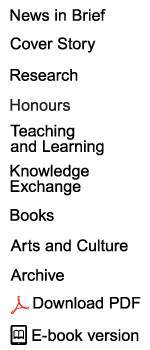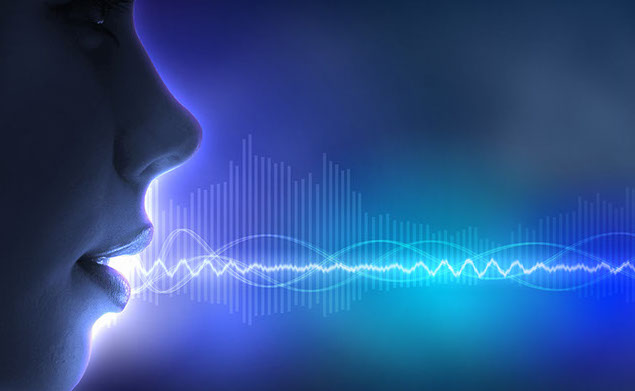SOUND AND Vision
Advances in the speed and image quality of ultrasound technology are enabling linguistic experts and speech and hearing scientists to ask new questions about how infants learn to articulate speech and why some experience difficulties.
Why is it some children find it difficult to enunciate certain sounds in their native tongue? In crossdisciplinary research, the Department of Linguistics and Division of Speech and Hearing Sciences are looking to answer this question via an ultrasound investigation of the acquisition of speech articulation in Cantonese, Putonghua, and English.
The research is being led by Linguistics Professor Diana Archangeli, whose focus is on what this reveals about language acquisition in general, and Dr Carol To, from the Education Faculty’s Division of Speech and Hearing Sciences, who is looking at how the results may help to develop new techniques in treating articulation problems in individuals with speech sound disorders.
“The advantages to using ultrasound to investigate are that it’s a medical device, people are familiar with it and therefore comfortable that it’s safe,” said Professor Archangeli. “Ultrasound imaging used to work at 30 frames a second, now it can go over 100 frames per second and the images are much clearer. We need such speeds as the tongue can move very fast. As the technology has improved, so we have been able to ask more precise questions.”
Ultrasound equipment is also portable – making it useful for classroom demonstrations or tests and easy to take overseas for remote investigations. “With my post-doctoral research fellow Dr Jon Yip, we have taken ultrasound equipment to remote parts of the world, such as Guwahati in India and Lombok in Indonesia,” she added.
Language experiments are conducted by placing the ultrasound probe under the chin of the subject, giving a clear image of the tongue’s movement. “Ultrasound works by issuing high-frequency sound waves which continue until they reach an echogenic barrier, a big enough change in density for the echo to be identified by the machine,” she explained. “The difference between the density of the tongue and the air above it is big so we get a sharp image of the surface of the tongue. Then we can see exactly how the tongue moves to form sounds and speech.”
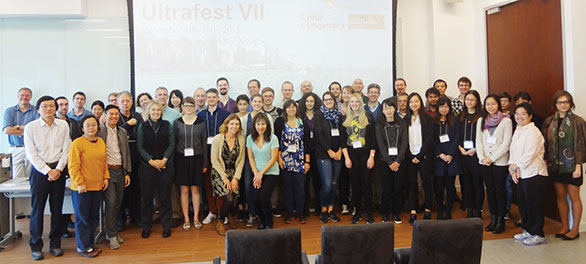
Ultrafest VII at HKU in December, 2015.
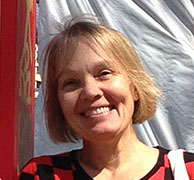
![]() Ultrasound and linguistics is an exciting field to be in right now – we discover new things all the time.
Ultrasound and linguistics is an exciting field to be in right now – we discover new things all the time. ![]()
Professor Diana Archangeli
Articulatory problems
The Research Grants Council (RGC) -funded research project focusses on sounds that are hard to pronounce for first language learners in three languages – English, Cantonese and Putonghua. In English, for example, some children have trouble with the R sound, and differentiating between L and Y. In Cantonese different sounds are challenging, such as T and K. The aim is to work out using ultrasound what children who have difficulties are doing in their effort to master the appropriate sounds.
“When I’m asked to explain what we’re doing, I always use the example of babies’ arms,” Professor Archangeli said. “When infants are born, their heads are big and their arms are small – when they grow up that changes dramatically. In the same way, a newborn baby’s tongue nearly fills its mouth [there are theories that this is to facilitate suckling]. The rest of the infant’s body grows rapidly, while the tongue grows slowly so it becomes smaller in proportion to the mouth.
“So an infant trying to talk has to figure out how to sound right while its body is changing. So, what we are asking here is: do the ones who are not articulating correctly sound wrong because their acoustics aren’t right, or because they are doing the wrong thing?
“As an infant, my son couldn’t sound his Rs, and I was told he would grow out of it. Some children do, but he did not, and later on had to have three years of speech therapy. If our research pans out, perhaps it will be a way of diagnosing kids who would benefit from early therapy.”
The research groups are divided into two – youngsters aged three to four and a half, and those aged five to nine. The ultrasound images of their tongue movements are compared with those of adults who are articulating correctly. Graphs show where there are differences in tongue movement. Some are markedly different. The research is about to move to the next stage – the technical analysis, for which the team will be drawing in physics expertise.
This is a relatively new area of linguistics research. Professor Archangeli enthused that the people within it are very proactive and involved. She recently gave her paper Ultrasound for Language Research at the Linguistics Society of Hong Kong Annual Research Forum, and in 2015 Hong Kong University played host to Ultrafest VII, a conference that’s been held around the world since 2002 for people who use ultrasound for language research.
“It was a really fun conference,” she said. “Because this is such a niche market the atmosphere was more like a laboratory group than a conference. During talks people really engaged, helped each other solve problems, suggested ways forward. Everyone came out so inspired about how they can better their own work. Ultrasound and linguistics is an exciting field to be in right now – we discover new things all the time.”
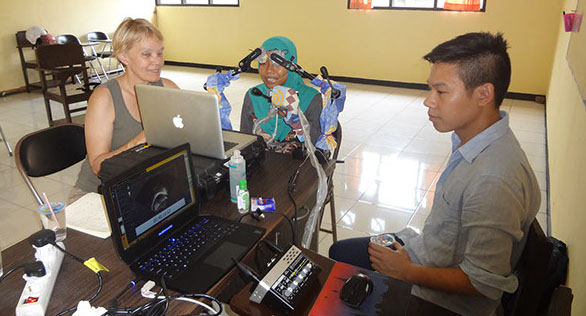
Professor Archangeli (left) and Dr Jon Yip (right) collecting data from a subject in Mataram, Lombok, Indonesia.
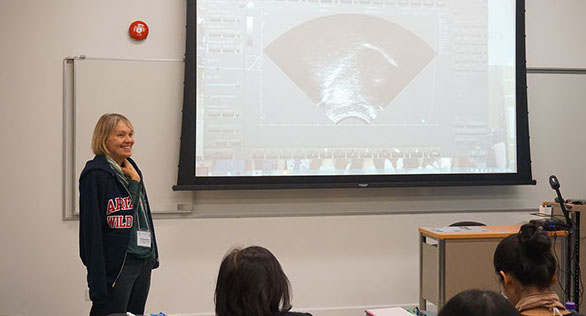
Professor Archangeli gave a workshop on ultrasound methods and results, in advance of Ultrafest VII, at the Linguistic Society of Hong Kong Annual Research Forum, to give locals a better understanding of the research methods before the conference took place.

